[1] 陶希,王佳,刘楚娟,等.缺血性卒中后抑郁动物模型构建及核心症状评定研究进展[J].中国康复医学杂志,2020,10(35):1264-1269.
[2] MITCHELL AJ, SHETH B, GILL J, et al. Prevalence and predictors of post-stroke mood disorders: A meta-analysis and meta-regression of depression, anxiety and adjustment disorder. Gen Hosp Psychiatry. 2017;47:48-60.
[3] 赵兵兵,李涛,王豆,等.缺血再灌注联合慢性不可预知刺激构建卒中后抑郁新模型[J].中国组织工程研究,2019,23(11):1755-1760.
[4] KIM JM, KANG HJ, KIM JW, et al. Associations of tumor necrosis factor-α and interleukin-1β levels and polymorphisms with post-stroke depression. Am J Geriatr Psychiatry. 2017;25(12):1300-1308.
[5] 陶希,刘佳,邓景贵,等.低频重复经颅磁刺激对卒中后抑郁的远期疗效及血5-羟色胺表达的影响[J].中华物理医学与康复杂志,2014,36(6): 416-420.
[6] KANG HJ, BAE KY, KIM SW, et al. Effects of interleukin-6, interleukin-18, and statin use, evaluated at acute stroke, on post-stroke depression during 1-year follow-up. Psychoneuroendocrinology. 2016;72:156-160.
[7] WANG C, WANG M, XIA K, et al. A bioactive injectable self-healing anti-inflammatory hydrogel with ultralong extracellular vesicles release synergistically enhances motor functional recovery of spinal cord injury. Bioact Mater. 2021;6(8):2523-2534.
[8] MORIYAMA Y. TAKAGI N, Tanonaka K. Intravenous injection of neural progenitor cells improved depression-like behavior after cerebral ischemia. Transl Psychiatry. 2011;1(8):e29.
[9] YUE N, LI B, YANG L, et al. Electro-acupuncture alleviates chronic unpredictable stress-induced depressive- and anxiety-like behavior and hippocampal neuroinflammation in rat model of depression. Front Mol Neurosci. 2018;11:149.
[10] JIA M, LI C, ZHENG Y, et al. Leonurine exerts antidepressant-like effects in the chronic mild stress-induced depression model in mice by inhibiting neuroinflammation. Int J Neuropsychopharmacol. 2017;20(11):886-895.
[11] CRAFT TK, DEVRIES AC. Role of IL-1 in poststroke depressive-like behavior in mice. Biol Psychiatry. 2006;60(8):812-818.
[12] Zhang Y, Liu L, Liu Y, et al. NLRP3 inflammasome mediates chronic mild stress-induced depression in mice via neuroinflammation. Int J Neuropsychopharmacol. 2015;18(8):pyv006.
[13] KIM JM, STEWART R, KIM SW, et al. Associations of cytokine gene polymorphisms with post-stroke depression. World J Biol Psychiatry. 2012;13(8):579-587.
[14] SPALLETTA G, CRAVELLO L, IMPERIALE F, et al. Neuropsychiatric symptoms and interleukin-6 serum levels in acute stroke. J Neuropsychiatry Clin Neurosci. 2013;25(4):255-263.
[15] ZHANG XF, ZOU W, YANG Y. Effects of IL-6 and cortisol fluctuations in post-stroke depression. J Huazhong Univ Sci Technolog Med Sci. 2016;36(5):732-735.
[16] 李庆丽,王贵贤,王艳捷,等.解郁通络方对脑卒中后抑郁神经免疫炎症指标的影响[J].中国实验方剂学杂志,2018,24(6):204-209.
[17] 王建楠,乔嘉璐,张磊,等.芬戈莫德对卒中后抑郁大鼠的治疗作用[J].神经解剖学杂志,2020,36(4):376-382.
[18] XU Y, SHENG H, TANG Z, et al. Inflammation and increased IDO in hippocampus contribute to depression-like behavior induced by estrogen deficiency. Behav Brain Res. 2015;288:71-78.
[19] NAGY EE, FRIGY A, SZÁSZ JA, et al. Neuroinflammation and microglia/macrophage phenotype modulate the molecular background of post-stroke depression: a literature review. Exp Ther Med. 2020;20(3):2510-2523.
[20] BENATTI FB, PEDERSEN BK. Exercise as an anti-inflammatory therapy for rheumatic diseases-myokine regulation. Nat Rev Rheumatol. 2015;11(2): 86-97.
[21] KUZIOR H, FIEBICH BL, YOUSIF NM, et al. Increased IL-8 concentrations in the cerebrospinal fluid of patients with unipolar depression. Compr Psychiatry. 2020;102:152196.
[22] SHELTON RC, CLAIBORNE J, Sidoryk-Wegrzynowicz M, et al. Altered expression of genes involved in inflammation and apoptosis in frontal cortex in major depression. Mol Psychiatry. 2011;16(7):751-762.
[23] JANELIDZE S, SUCHANKOVA P, EKMAN A, et al. Low IL-8 is associated with anxiety in suicidal patients:genetic variation and decreased protein levels. Acta Psychiatr Scand. 2015;131(4):269-278.
[24] SHAHEEN HA, DAKER LI, ABBASS MM, et al. The relationship between the severity of disability and serum IL-8 in acute ischemic stroke patients. Egypt J Neurol Psychiatr Neurosurg. 2018;54(1):26.
[25] 梁婉桂,汤瑞珠,傅晓芸,等.行气解郁方对脑卒中后抑郁患者神经功能及炎症因子水平的影响[J].辽宁中医杂志,2020,47(11):130-133.
[26] WU D, ZHANG G, ZHAO C, et al. Interleukin-18 from neurons and microglia mediates depressive behaviors in mice with post-stroke depression. Brain Behavi Immun. 2020;88:411-420.
[27] TSUKAHARA T, MASUHARA M, IWAI H, et al. Repeated stress-induced expression pattern alterations of the hippocampal chloride transporters KCC2 and NKCC1 associated with behavioral abnormalities in female mice. Biochem Biophys Res Commun. 2015;465(1):145-151.
[28] LIU YN, PENG YL, LIU L, et al. TNFα mediates stress-induced depression by upregulating indoleamine 2,3-dioxygenase in a mouse model of unpredictable chronic mild stress. Eur Cytokine Netw. 2015;26(1):15-25.
[29] MU Y, WANG Z, ZHOU J, et al. Correlations of post-stroke depression with inflammatory response factors. Iran J Public Health. 2018;47(7): 988-993.
[30] ZHAO X, CAO F, LIU Q, et al. Behavioral, inflammatory and neurochemical disturbances in LPS and UCMS-induced mouse models of depression. Behav Brain Res. 2019;364:494-502.
[31] O’CONNOR JJ. Targeting tumour necrosis factor-α in hypoxia and synaptic signalling. Ir J Med Sci. 2013;182(2):157-162.
[32] BOBIŃSKA K, GAŁECKA E, SZEMRAJ J, et al. Is there a link between TNF gene expression and cognitive deficits in depression? Acta Biochim Pol. 2017;64(1):65-73.
[33] WANG M, GUO J, DONG LN, et al. Cerebellar fastigial nucleus stimulation in a chronic unpredictable mild stress rat model reduces post-stroke depression by suppressing brain inflammation via the microRNA-29c/TNFRSF1A signaling pathway. Med Sci Monit. 2019;25:5594-5605.
[34] LIU JJ, WEI YB, STRAWBRIDGE R, et al. Peripheral cytokine levels and response to antidepressant treatment in depression:a systematic review and meta-analysis. Mol Psychiatry. 2019;25(2):339-350.
[35] LI N, WANG Q, WANG Y, et al. Fecal microbiota transplantation from chronic unpredictable mild stress mice donors affects anxiety-like and depression-like behavior in recipient mice via the gut microbiota-inflammation-brain axis. Stress. 2019;22(5):592-602.
[36] ZHANG B, WANG PP, HU KL, et al. Antidepressant-like effect and mechanism of action of honokiol on the mouse lipopolysaccharide (LPS) depression model. Molecules. 2019;24(11):2035.
[37] ZHANG J, HE H, QIAO Y, et al. Priming of microglia with IFN-γ impairs adult hippocampal neurogenesis and leads to depression-like behaviors and cognitive defects. Glia. 2020;68(12):2674-2692.
[38] CAMARGOS QM, SILVA BC, SILVA DG, et al. Minocycline treatment prevents depression and anxiety-like behaviors and promotes neuroprotection after experimental ischemic stroke. Brain Res Bull. 2020;155:1-10.
[39] SAITO K, MARKEY SP, HEYES MP. Chronic effects of gamma-interferon on quinolinic acid and indoleamine-2,3-dioxygenase in brain of C57BL6 mice. Brain Res. 1991;546(1):151-154.
[40] SU JA, CHOU SY, TSAI CS, et al. Cytokine changes in the pathophysiology of poststroke depression. Gen Hosp Psychiatry. 2012;34(1):35-39.
[41] BENSIMON K, HERRMANN N, SWARDFAGER W, et al. Kynurenine and depressive symptoms in a poststroke population. Neuropsychiatr Dis Treat. 2014;10:1827-1835.
[42] PARK HJ, SHIM HS, AN K, et al. IL-4 inhibits il-1β-induced depressive-like behavior and central neurotransmitter alterations. Mediators Inflamm. 2015;2015:941413.
[43] LIU X, LIU J, ZHAO S, et al. Interleukin-4 is essential for microglia/macrophage m2 polarization and long-term recovery after cerebral ischemia. Stroke. 2016;47(2):498-504.
[44] LAUMET G, EDRALIN JD, CHIANG AC, et al. Resolution of inflammation-induced depression requires T lymphocytes and endogenous brain interleukin-10 signaling. Neuropsychopharmacology. 2018;43(13): 2597-2605.
[45] ZHANG Y, YU P, LIU H, et al. Hyperforin improves post-stroke social isolation‑induced exaggeration of PSD and PSA via TGF-β. Int J Mol Med. 2019;43(1):413-425.
[46] TANG CZ, YANG JT, LIU QH, et al. Up-regulated miR-192-5p expression rescues cognitive impairment and restores neural function in mice with depression via the Fbln2-mediated TGF-β1 signaling pathway. FASEB J. 2019;33(1):606-618.
[47] ZHANG K, YANG C, CHANG L, et al. Essential role of microglial transforming growth factor-β1 in antidepressant actions of (R)-ketamine and the novel antidepressant TGF-β1. Transl Psychiatry. 2020;10(1):32.
[48] 邱文静,杨欢,肖波,等.抑郁症中糖皮质激素受体与CD4+CD25+调节性T细胞的关系及其所致免疫失衡机制的初步探讨[J].中国神经精神疾病杂志,2009,35(6):350-354.
[49] AL-HAKEIM HK, AL-KUFI SN, AL-DUJAILI AH, et al. Serum interleukin levels and insulin resistance in major depressive disorder. CNS Neurol Disord Drug Targets. 2018;17(8):618-625.
[50] YANG RR, LU BC, LI T, et al. The relationship between high-sensitivity C-reactive protein at admission and post stroke depression:a 6-month follow-up study. Int J Geriatr Psychiatry. 2016;31(3):231-239.
[51] FELGER JC, LI Z, HAROON E, et al. Inflammation is associated with decreased functional connectivity within corticostriatal reward circuitry in depression. Mol Psychiatry. 2016;21(10):1358-1365.
[52] TANG CZ, ZHANG YL, WANG WS, et al. Elevated serum levels of neopterin at admission predicts depression after acute ischemic stroke: a 6-month follow-up study. Mol Neurobiol. 2016;53(5):3194-3204.
[53] KALKMAN HO, FEUERBACH D. Antidepressant therapies inhibit inflammation and microglial M1-polarization. Pharmacol Ther. 2016;163:82-93.
[54] 陈钊, 侯乐,李丹,等.血清脂联素预测缺血性卒中患者的卒中后抑郁[J].国际脑血管病杂志,2018,26(8):577-582.
[55] LI C, MENG F, GARZA JC, et al. Modulation of depression-related behaviors by adiponectin AdipoR1 receptors in 5-HT neurons. Mol Psychiatry. 2020. doi: 10.1038/s41380-020-0649-0.
[56] WANG XQ, LI WH, TANG YH, et al. The correlation between adiponectin and FGF9 in depression disorder. Brain Res. 2020;1729:146596.
[57] 李丛琴,王强,罗路,等.运动训练对卒中后抑郁大鼠PTEN诱导的炎症通路及海马神经元凋亡的影响[J].中华物理医学与康复杂志,2020, 42(7):577-582.
[58] HANAMSAGAR R, TORRES V, KIELIAN T. Inflammasome activation and IL-1β/IL-18 processing are influenced by distinct pathways in microglia. J Neurochem. 2011;119(4):736-748.
[59] WANG Z, REN W, ZHAO F, et al. Curcumin amends Ca(2+) dysregulation in microglia by suppressing the activation of P2X7 receptor. Mol Cell Biochem. 2020;465(1-2):65-73.
[60] CHE B, ZHONG C, GE J, et al. Serum Matrix Metalloproteinase-9 Is Associated With Depression After Acute Ischemic Stroke. Circ J. 2019;83(11):2303-2311.
[61] CHE B, ZHU Z, BU X, et al. Multiple biomarkers covering several pathways for the prediction of depression after ischemic stroke. J Affect Disord. 2021; 280(Pt A):442-449.
[62] ALAIYED S, BOZZELLI PL, CACCAVANO A, et al. Venlafaxine stimulates PNN proteolysis and MMP-9-dependent enhancement of gamma power;relevance to antidepressant efficacy. J Neurochem. 2019;148(6): 810-821.
[63] LU X, DUAN J, CHENG Q, et al. The association between serum growth differentiation factor-15 and 3-month depression after acute ischemic stroke. J Affect Disord. 2020;260:695-702.
[64] 焦光美,单海雷,康玲伶,等.脑梗死大鼠脑组织生长分化因子-15的表达及其与神经功能损害的关系[J].中国免疫学杂志,2020,36(2):154-158.
[65] TSAI VW, MANANDHAR R, JØRGENSEN SB, et al. The anorectic actions of the TGFβ cytokine MIC-1/GDF15 require an intact brainstem area postrema and nucleus of the solitary tract. PLoS One. 2014;9(6): e100370.
[66] MALIK VA, ZAJICEK F, MITTMANN LA, et al. GDF15 promotes simultaneous astrocyte remodeling and tight junction strengthening at the blood-brain barrier. J Neurosci Res. 2020;98(7):1433-1456.
[67] 程哲,郭世龙,孟焱,等.缺血性脑卒中后抑郁患者血清淀粉样蛋白A水平检测及其意义研究[J].中华神经医学杂志,2018,17(11): 1143-1146.
[68] DE OLIVEIRA EM, VISNIAUSKAS B, TUFIK S, et al. Serum amyloid a production is triggered by sleep deprivation in mice and humans:is that the link between sleep loss and associated comorbidities? Nutrients. 2017;9(3):311.
[69] YU J, ZHU H, TAHERI S, et al. Serum amyloid a-mediated inflammasome activation of microglial cells in cerebral ischemia. J Neurosci. 2019;39(47): 9465-9476. |
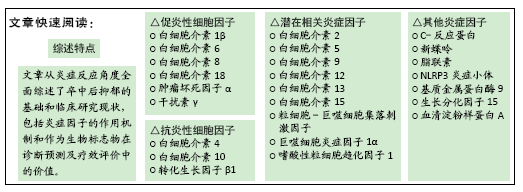
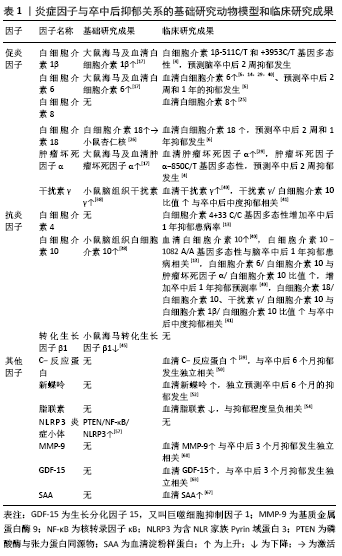
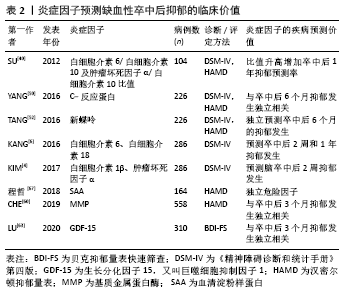
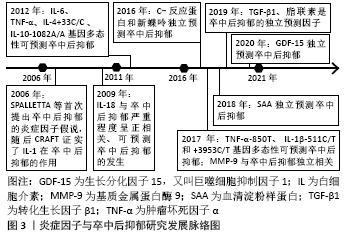
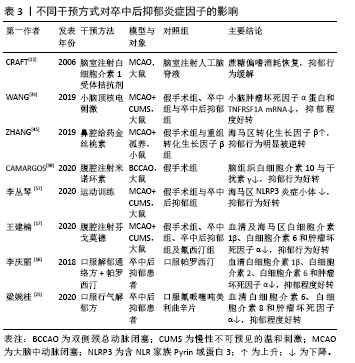


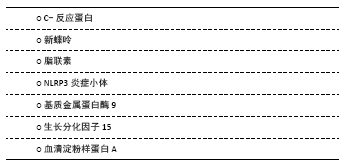

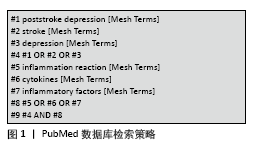
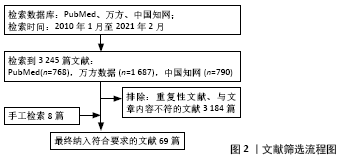
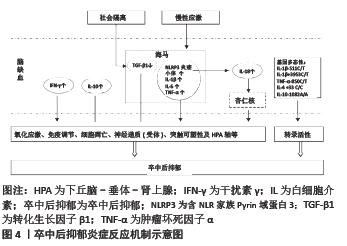 转录活性受促炎因子与(或)抗炎因子的基因多态性影响,前者功能增强与(或)后者功能减弱增加卒中后抑郁易感性,见图4。根据既往文献报道,尚未见非特异炎症因子基因多态性与卒中后抑郁的关联。针对遗传易感患者,非特异炎症因子有可能成为有价值的干预靶点。炎性标志物的研究不仅有助于卒中后抑郁的早期风险预测、临床诊断及预后判断,而且有益于治疗效应的客观评价及靶向药物开发。中枢源性的炎症因子在卒中后情感障碍中发挥根本作用;由于卒中后血脑屏障被破坏,外周源性炎症因子可逆行穿透至中枢,导致继发性损伤。脑脊液来源的标志物对研究中枢炎症反应具有天然优势,而外周血清可能受多重因素影响。所以,在炎症因子细胞来源具有多样性的背景下,如何排除外周因素对中枢的干扰,是下一步需要解决的难题。
转录活性受促炎因子与(或)抗炎因子的基因多态性影响,前者功能增强与(或)后者功能减弱增加卒中后抑郁易感性,见图4。根据既往文献报道,尚未见非特异炎症因子基因多态性与卒中后抑郁的关联。针对遗传易感患者,非特异炎症因子有可能成为有价值的干预靶点。炎性标志物的研究不仅有助于卒中后抑郁的早期风险预测、临床诊断及预后判断,而且有益于治疗效应的客观评价及靶向药物开发。中枢源性的炎症因子在卒中后情感障碍中发挥根本作用;由于卒中后血脑屏障被破坏,外周源性炎症因子可逆行穿透至中枢,导致继发性损伤。脑脊液来源的标志物对研究中枢炎症反应具有天然优势,而外周血清可能受多重因素影响。所以,在炎症因子细胞来源具有多样性的背景下,如何排除外周因素对中枢的干扰,是下一步需要解决的难题。